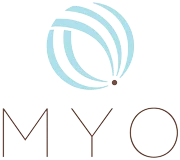Adelyn Botto
About Adelyn
- Training: 1500 hours
- School: Neuromuscular Concepts in San Antonio TX
- Licensed since: 1993
- With Myo since: 2007
- Continuing Education: MyoFascial Release, Structural Bodywork, Upledger Craniosacral Therapy (CST), and Biodynamic CST
- Areas of expertise: Deep Tissue, Pain Management, Craniosacral Therapy, Thai Massage, Facials
Book with Adelyn
Adelyn attended Neuro-Muscular Concepts in 1992, learning techniques that balance the musculoskeletal and nervous systems to address acute and chronic pain. She continued her studies in MyoFascial Release, Structural Bodywork, Upledger Craniosacral Therapy (CST), and a 700-hr. program in Biodynamic CST, which is steeped in theories of Somatic Experiencing, Neuroscience, Embryology, and Somatic, Pre/Peri-natal, and Buddhist Psychologies. She studied Thai Massage in Thailand with Masters Sinchai and Nat. She is a continuing education provider, and a teaching assistant for CST trainings. She designed an IBA in Applied Somatic Arts, and currently teaches stress reduction workshops. Adelyn has found that structural issues/pain occur when the nervous system creates physical adaptations to stress. Her sessions are designed to develop self- awareness in the client, and to teach preventative and self-healing techniques.
How long have you been a licensed massage therapist?
26 years.
How many hours of training do you have?
Approximately 1500 hours in massage, craniosacral therapy, myofascial release, structural bodywork, and thai massage.
Why did you choose massage therapy as your career?
I received my first massage at age 14, and my father was always giving my mom and I amateur “chiropractic” adjustments…so I became intrigued with alternative ways to address issues in the body.
Where did you go to school for massage?
Neuromuscular Concepts in San Antonio, TX.
How do you describe your massage/work to others?
I use a combination of Somatic Education, Structural Bodywork and Myofascial Release, and Craniosacral Therapy to help a client achieve more freedom in their body. I also work with babies who experienced a difficult birth, and a resulting issue, condition, or developmental delay.
What are some examples of Continuing Education you are interested in and why?
I am very interested in KinesioTape. I am a brain/neuroscience nerd, and taping seems to really change the brain’s messages to muscles/muscle groups. During that time, one has the opportunity to repattern those muscles.
What do you do to stay healthy?
I love to partake in several forms of exercise. I also combine several nutritional theories. I receive acupuncture, massage, and craniosacral therapy regularly. I drink water all day. And most importantly, I use relaxation techniques to prevent stress from controlling me!
What do you like about working at Myo Massage?
I like that Myo is truly interested in the well-being of the client, and that they work to match clients with a therapist that fits their needs. I like that I am surrounded by other skilled therapists, and that we all trade services and learn from each other. I especially like that the owners are practicing therapists who stay in touch with both client and therapist needs.
How do you approach pain management massage?
My treatment goal is to help folks understand how their body has merely adapted to various life experiences, i.e., injury, trauma, repetitive motion/posture, stress, or a complicated birth. I teach people how their body then creates a physical reinforcement for the above situations, and ways that they can reverse this process.
What techniques do you frequently use in pain management massage?
Structure analysis, Myofascial release with active movement, so that the client is helped to feel where the issue is originating, and to enhance their self-awareness, CST and stretching to help their system to integrate the intense work, somatic re-education and somatic exercises to help the client make changes from the inside-out.
What is Craniosacral Therapy?
Anyone can do an internet search and find out the definition of Craniosacral Therapy (CST), so instead, I am going to tell you what mine and my clients’ experiences have been with the work and the context in which I use it in the treatment room.
I describe CST as a reboot for your ‘hard drive’or nervous system. I use it in sessions to help integrate intense bodywork because the nervous system likes to make small changes at a time. My theory is that it will help with many of the auto-immune disorders, the onset of which clients link to several traumatic experiences that occurred in a short time span, that caused the nervous system to go into ‘overwhelm.’ Life in modern society today contributes to overwhelm, and CST helps re-center us to a higher level of functioning!


